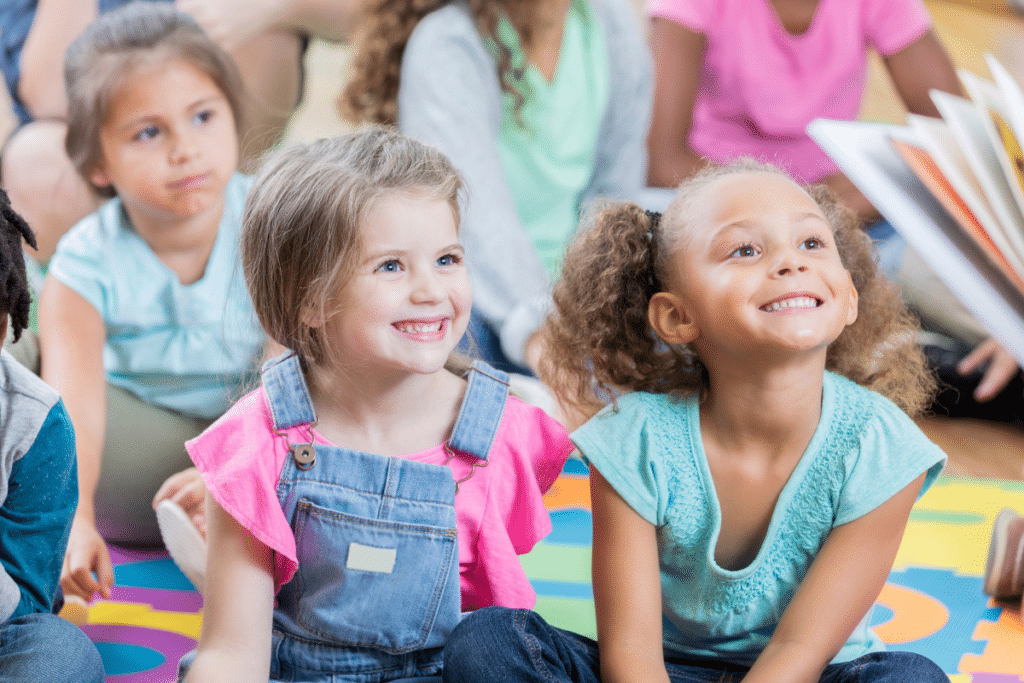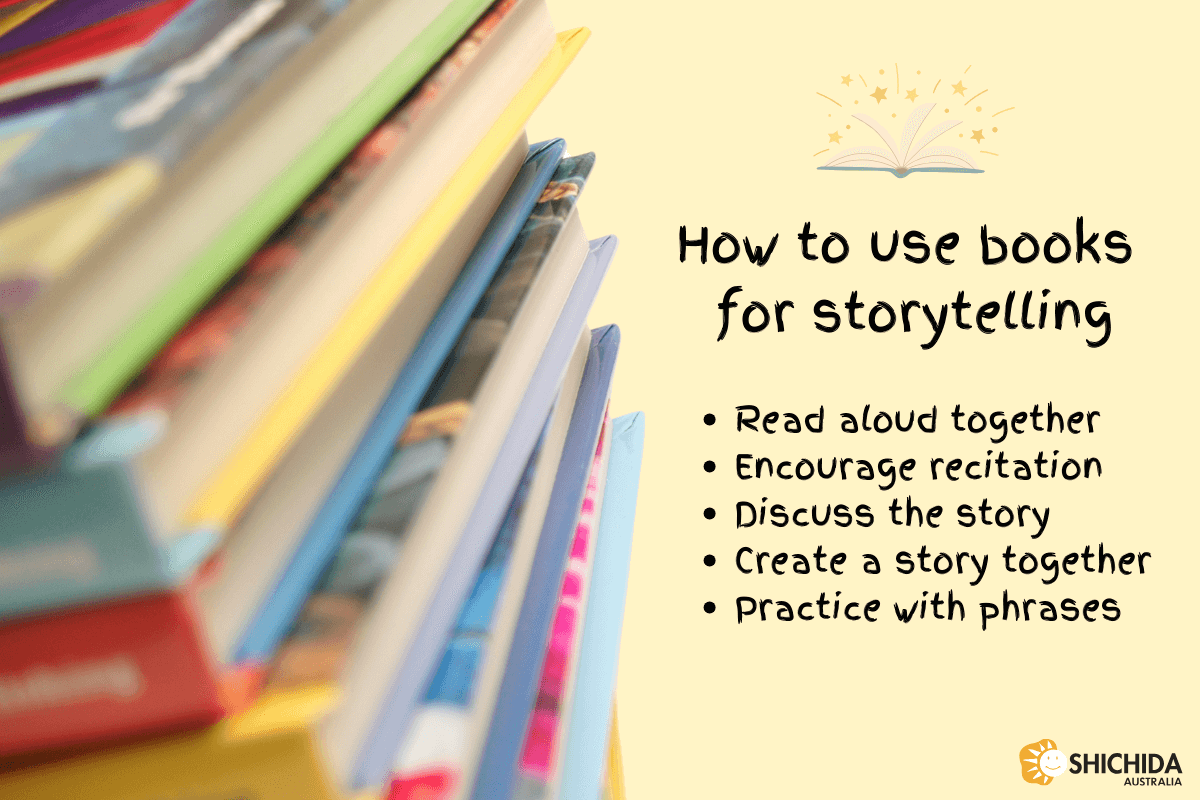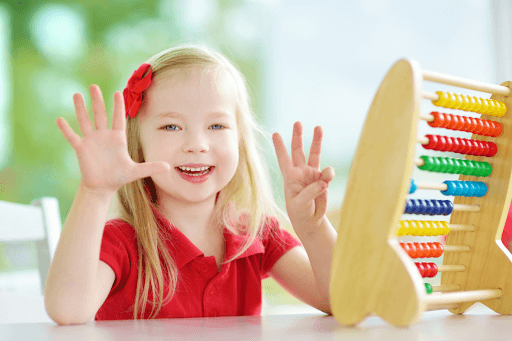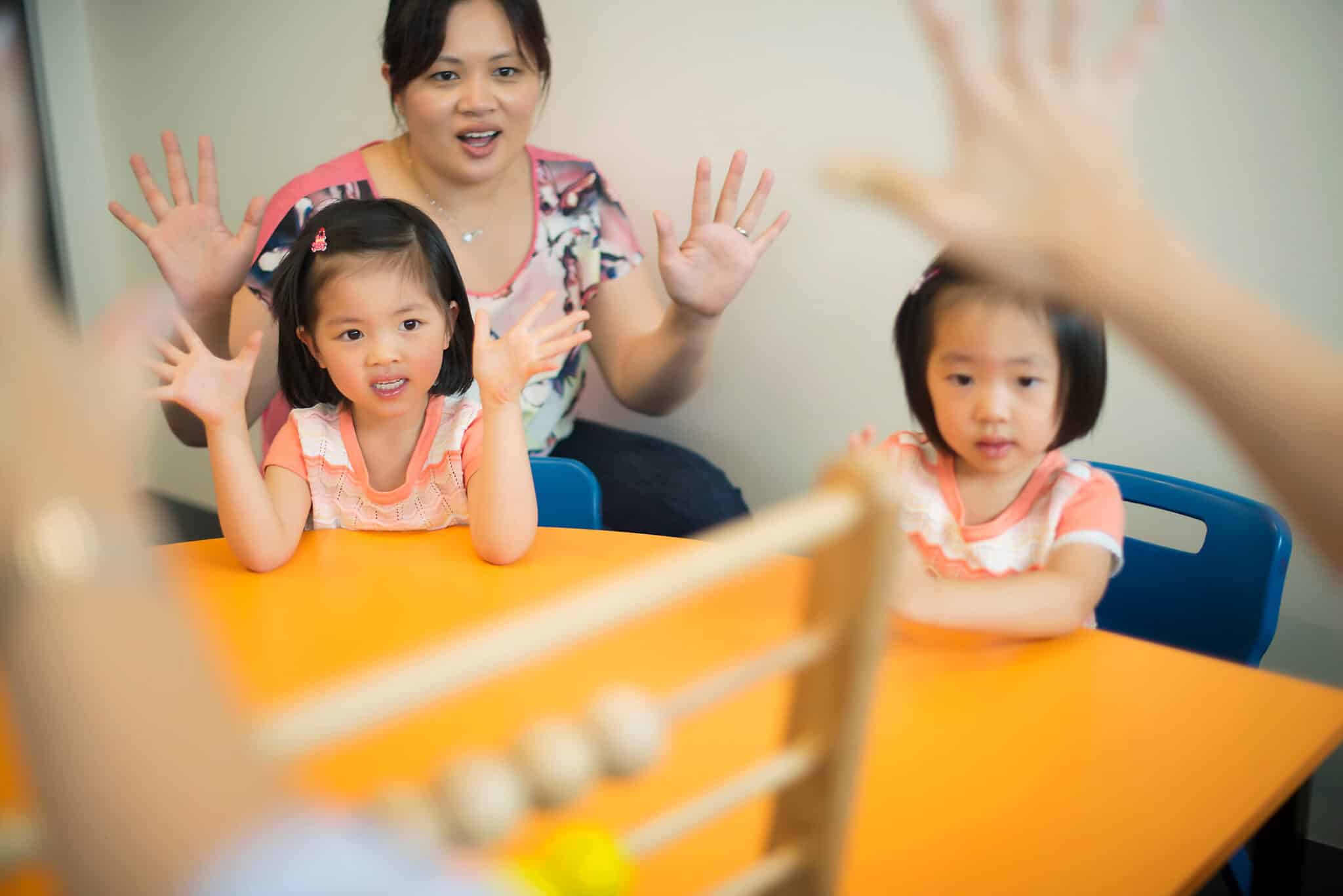
Developing Language Skills through Storytelling
Have you ever watched a child’s eyes light up at the start of a story? This magical moment is more than just entertainment; it’s a fundamental step in developing language skills in young minds. Storytelling bridges imagination with the mechanics of language, nurturing budding communicators by enriching their vocabulary, enhancing their understanding of narrative structures, and fostering a lifelong love for reading and learning.
Table of Contents
Why is storytelling so powerful for developing language skills in kids?
Storytelling is an absolutely magical tool when it comes to developing language skills in children, and there are several reasons why it’s so powerful and effective.
Firstly, storytelling captivates children’s attention in a way that few other activities can. When we tell a story, we’re not just speaking words; we’re painting pictures in the minds of our listeners. This visualisation process is incredibly engaging for kids and stimulates their imagination, encouraging them to create mental images of the characters and settings.
This active engagement helps to strengthen their cognitive processes, including attention, memory, and thinking skills, which are foundational for language development.
Moreover, storytelling introduces children to new vocabulary in a context that makes sense, making it easier for them to grasp and remember new words. Unlike direct teaching methods, which can sometimes feel abstract or disconnected from real-life experiences, stories provide a rich context for new language, weaving words into narratives that are meaningful and memorable to children.
But it’s not just about vocabulary; storytelling also exposes children to the rhythms and patterns of language. Through stories, children hear how sentences are structured, how questions are formed, and how language can be used to express a wide range of emotions and actions. This immersion in the flow of language helps to develop their listening and comprehension skills, laying the groundwork for effective communication.
Interactive storytelling, where children are encouraged to ask questions, predict outcomes, or even contribute their own ideas, is particularly beneficial. This two-way communication fosters critical thinking and encourages children to use their own words to express thoughts and feelings. It’s a safe and supportive environment for them to experiment with language, try out new words, and practice articulating their ideas.
Furthermore, storytelling is a beautiful way to strengthen the bond between parents and children. It’s a shared activity that promotes closeness, trust, and mutual enjoyment.
For children, feeling connected and secure is essential for learning, and the emotional warmth of storytelling can enhance their readiness to learn and absorb language.

Storytelling Techniques for All Ages
Let’s explore how to adapt the storytelling experience to meet the developmental needs and interests of children as they grow.
For Babies (0-1 year)
Technique: Soft, melodic storytelling with lots of facial expressions and gentle gestures.
Why it works: Babies are fascinated by the human voice and face. Using expressive tones and animated expressions captivates their attention and begins to introduce them to the rhythm and sounds of language. This early exposure lays the groundwork for language learning.
For Toddlers (1-3 years)
Technique: Interactive storytelling with simple, repetitive phrases, and opportunities for toddlers to join in.
Why it works: Toddlers love repetition because it helps them predict what comes next, making them feel secure and engaged. Encouraging them to participate, even with simple sounds or gestures, promotes language development and keeps them actively involved in the story.
For Preschoolers (3-5 years)
Technique: Use of vivid imagery, character voices, and props to bring stories to life.
Why it works: Preschoolers have active imaginations and can understand more complex narratives. Using different voices for characters and incorporating props makes the story more engaging and stimulates imaginative play, enhancing their narrative skills and vocabulary.
For Early School Age (5-8 years)
Technique: Incorporating questions, predictions, and moral lessons into the storytelling.
Why it works: Children at this age are capable of more abstract thinking and can understand cause and effect. Asking them to predict what happens next or discussing the moral of the story encourages critical thinking and reflection. It also helps them to connect the story to their own experiences, enriching their understanding and empathy.
For Older Children (8+ years)
Technique: Shared storytelling where the child is encouraged to contribute to the story, either by taking turns to tell parts of it or by deciding what happens next.
Why it works: Older children have the language skills and creativity to co-create stories. This collaborative approach fosters creativity, boosts confidence in their storytelling abilities, and enhances their understanding of narrative structure. It’s also a fantastic way for them to practise expressive language and delve into more complex themes.
From Listening to Telling: Encouraging Children to Become Storytellers
Every child has stories to tell. Encouraging your child to narrate their day, invent tales, or describe an imaginary friend fosters creativity and confidence in using language.
Start with prompts related to their interests or use story cards with pictures as cues for creating their own tales. The joy and pride they find in storytelling will fuel their desire to explore and use language more deeply.
Here are some tips to facilitate this process:
Encouraging Storytelling Skills
Start with Shared Storytelling
Begin by telling stories together. You can start a story and ask your child to come up with what happens next. This shared storytelling approach makes the process less daunting and shows them that storytelling is simply sharing ideas and imagination.
Use Prompts
Give your child story prompts to spark their creativity. These can be as simple as a picture, an object, or a starting sentence like, “Once upon a time, in a deep, dark forest…” Prompts provide a starting point from which their imagination can take off.
Encourage Everyday Storytelling
Encourage your child to tell you about their day in the form of a story, including details about what happened first, next, and last. This not only helps in structuring their narratives but also in seeing the storytelling potential in their everyday experiences.
Create a Story Bag
Fill a bag with random objects or pictures and let your child pull out items to include in their story. This fun activity requires them to think creatively about how unrelated elements can fit into one narrative.
Ask Open-Ended Questions
While listening to their stories, ask open-ended questions that encourage them to expand on their ideas, such as, “What does the magical tree look like?” or “How does the hero solve the problem?”. This shows interest in their story and stimulates further creativity.
Praise Efforts
Praise their efforts, not just the story’s content. Highlighting their creativity, imagination, and bravery in sharing their story reinforces their confidence and enthusiasm for storytelling.
Enhancing Storytelling Techniques
Provide a Variety of Books
Expose them to a wide range of books, including different genres and styles. This broadens their understanding of narrative possibilities and enriches their vocabulary, providing more tools for their storytelling arsenal.
Storytelling Games
Engage in storytelling games that have rules for constructing stories, such as story dice or collaborative story-writing apps. These games provide structure that can make storytelling less intimidating for beginners.
Model Storytelling
Share your own stories, especially ones that relate to your experiences or make-believe tales. This models the joy and creativity of storytelling, encouraging them to try it themselves.
Encourage Visualisation
Encourage them to close their eyes and visualise their story before telling it. This helps in making the narrative more vivid and engaging, both for the storyteller and the listener.
Tips for Using Books to Teach Storytelling
Read Aloud Together: Books designed with simple, engaging narratives are perfect for young readers. Reading aloud helps children understand the flow of a story and introduces them to the structure of beginning, middle, and end.
Encourage Recitation: Once your child is familiar with a story, encourage them to recite it back to you. This can be done by looking at the pictures and remembering the narrative.
Discuss the Story: After reading, talk about the story. Ask your child what they liked, what they didn’t understand, or how they felt about the characters’ decisions. This encourages critical thinking and deeper engagement with the narrative.
Create a Story Together: Use the themes or characters from the book as a springboard for creating new stories together. You can take turns adding sentences to build on the story, encouraging your child to use their imagination and creativity.
Practice with Phrases: Speak Up Stories incorporate frequently-used phrases and questions, making them excellent resources for practising conversational English. Encourage your child to use these phrases in their own storytelling, enhancing their conversation ability.

Developing Language Skills with Shichida Australia
At Shichida Australia, we know that storytelling is a powerful tool for developing language skills in early childhood. Storytelling helps children expand their vocabulary, strengthen memory, and boost creativity, all while building social confidence and learning to express themselves in a fun, engaging way.
Storytelling is interwoven throughout our curriculum, enriching the learning journey at every stage. It starts with engaging our babies through expressive tones, dramatic facial expressions, songs and flashcards to spark their auditory and visual senses. This progresses for toddlers to interactive tales such as our popular ‘Silly Story’ memory game which also builds vocabulary and narrative understanding, and evolves into more complex storytelling for pre-kindergarteners to encourage critical thinking and creative expression.
This approach not only develops a profound love for language but also empowers our children to become confident communicators and imaginative storytellers, laying a foundation for lifelong learning and emotional intelligence.
Other activities to improve attention and concentration for kids
As well as focus and concentration games for kids, there are many other activities you can do with your child to flex their focus muscles!
Mindfulness and meditation: Encourage your child to participate in mindfulness exercises and meditation. This practice can improve focus, reduce stress, and promote a sense of calm. For younger kids, you can have them lay down with a stuffed animal on their belly so they can watch it rise and fall as they breathe.
Reading: Regular reading is an excellent way to improve your child’s concentration span. Start with short stories and gradually move on to longer books as they are able to concentrate for longer periods.
Speak Up Stories is a complete set of 11 page picture books and a CD teaching a range of phrases from greetings and farewells to self introduction. It also incorporates expressions for surprise, emotional situations, and phrases encapsulating both past and future tenses.
Mindful colouring: Just like the mindful colouring book trend among adults, this can help children focus and divert attention from distractions. Starting with small circles, they gradually progress to bigger shapes and complex patterns, improving their ability to concentrate for longer periods.
Music lessons: Learning to play a musical instrument enhances concentration, focus, and coordination.
Cooking and baking: Following recipes and measuring ingredients require sustained attention and sequential thinking.
Martial arts: Martial arts classes for kids is a fantastic way to improve focus, awareness of their body, and self-discipline.
Origami: Learning and practising the wonderful art of paper folding can help your child develop fine motor skills, patience, and concentration.
Quick tips for parents
When you sit down to do an activity with your child, remember to give your full attention to the activity too! Show up and lead by example; put your phone on flight mode, turn off the TV and be present with your child.
You can also support their attention by not interrupting them, allowing them to follow through on what they’re saying or doing without switching the activity.
Limit distractions: Create a quiet, distraction-free environment for your child to study or engage in tasks that require concentration.
Break down large tasks: Large tasks can overwhelm children, causing them to lose focus. Break down large tasks into smaller steps so they don’t seem as overwhelming.
How to improve concentration for kids with ADHD
Kids with Attention Deficit Hyperactivity Disorder (ADHD) usually struggle with attention and concentration.
Signs of ADHD can show up in various ways:
Inattention: Frequently forgetting instructions and moving between tasks without completing them.
Impulsivity: Acting without thinking is a common trait, including talking over others, difficulty controlling emotions, and being accident-prone.
Hyperactivity: Many children with ADHD exhibit constant fidgeting and restlessness, finding it challenging to remain still or sit quietly.
Not all children with ADHD display hyperactivity. Some primarily struggle with focus, attention, forgetfulness, and easy distractibility. This form is sometimes referred to as “inattentive ADHD.”
While ADHD encompasses a range of challenges, if you can help your little one increase their focus skills you can help them tackle certain situations.
All the activities and games we’ve listed above can help and we’ve included two bonus tips below which can be especially helpful to improve focus concentration in kids with ADHD.
Speak it out loud
Encourage your child to practise self-coaching by talking aloud to themselves, as if they are the narrator of their own actions. For example, if you are baking cupcakes together, have them speak out the actions:
“Now I’m adding the egg. Next I get the wooden spoon to mix everything together!” and so on.
This self-coaching technique assists your child in maintaining attention and following the sequence of steps.
Use simple songs to stay on track
Children’s concentration problems with ADHD often mean they struggle to stay on track with a task. Making up simple songs can help them. For example, if it’s time to pack away their play things, singing a simple song like “We’re putting away, we’re packing up, we’re finished with play!” as they do the task can help them stay focused until the job is done.
Shichida Australia
At Shichida Australia, we introduce your child to activities and games to improve their attention and concentration from a young age. We also share with you how to improve children’s concentration further at home. Book your trial class today!


